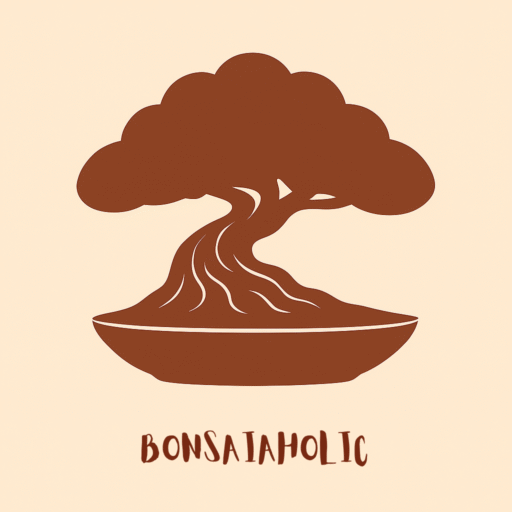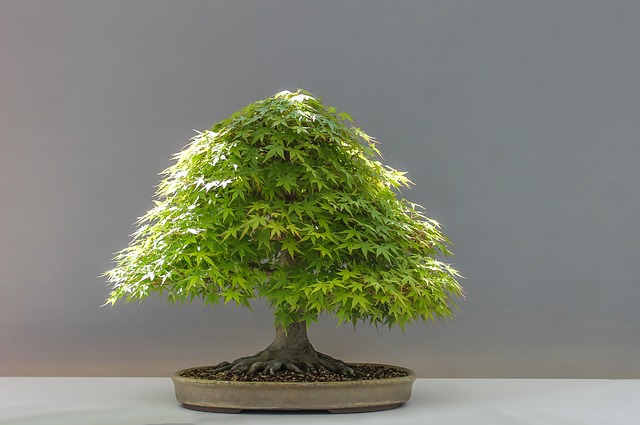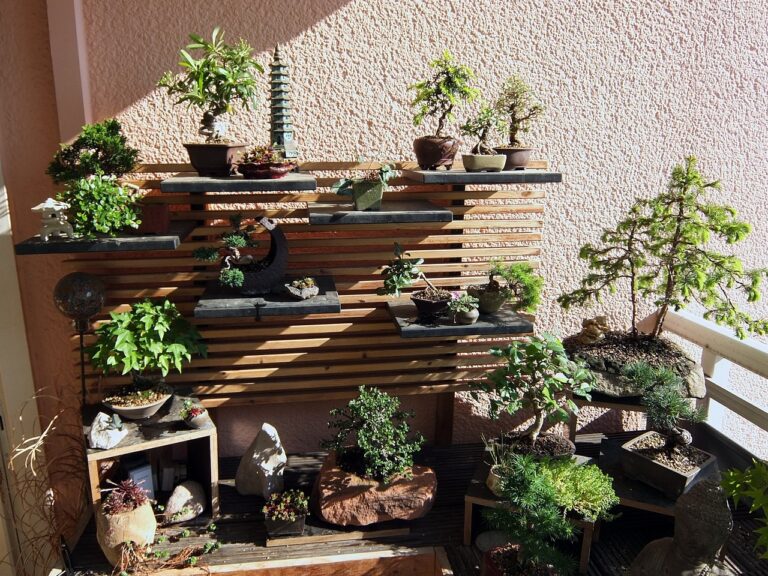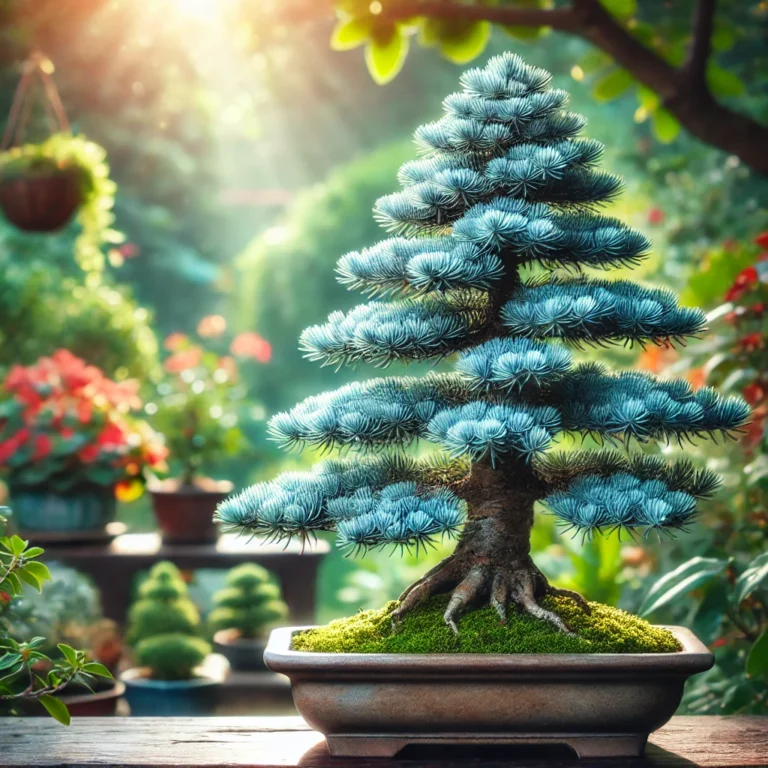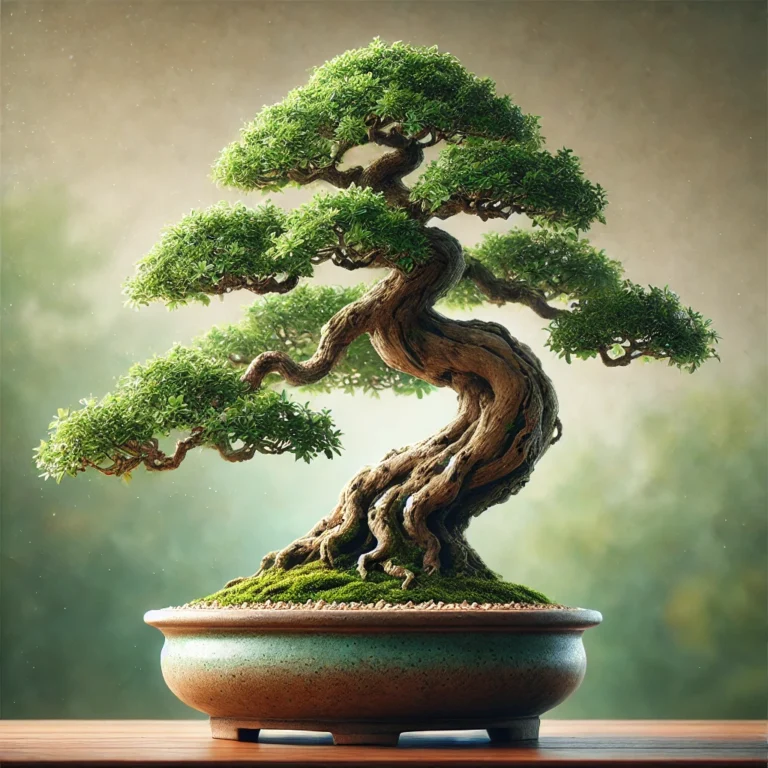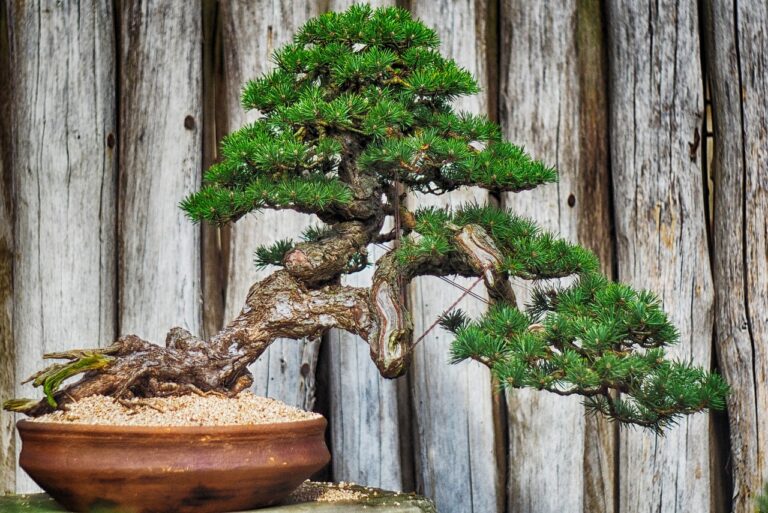Peach Bonsai Tree: A Complete Guide for Enthusiasts
The peach bonsai tree, or Prunus persica, is an exquisite miniature that combines the beauty of delicate peach blossoms with the art of bonsai cultivation. Originally from China, peach trees have been revered for centuries, not only for their fruits but also for their lovely flowers. Growing a peach bonsai tree requires patience, dedication, and a bit of expertise, but the results are gratifying. This guide covers everything from the history and care to frequently asked questions about peach bonsai trees.
History and Significance of Peach Trees in Bonsai
Peach trees (Prunus persica) are ancient plants native to China, where they are symbols of longevity, prosperity, and good luck. They are part of the Rosaceae family and were initially cultivated for their fruit. With time, people also began to appreciate the peach tree’s beautiful blossoms and began cultivating them as ornamental plants.
On the other hand, Bonsai originated in Japan as a refined art form that grew from a Chinese practice. The word “bonsai” means “planted in a container.” This art of growing miniature trees combines horticulture with aesthetic appeal. The peach bonsai tree merges these traditions, becoming an iconic bonsai tree cherished worldwide.
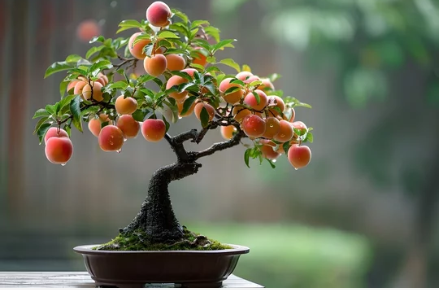
Characteristics of Peach Bonsai Tree
The peach bonsai is known for its seasonal beauty. In spring, it produces lovely pink or white blossoms, which are often followed by tiny peach fruits, adding visual interest. The leaves are a vibrant green, with a slightly serrated edge that gives them texture. The bark of the peach bonsai tree is smooth and has a light gray hue, which darkens and gains texture as the tree matures. With proper pruning, a peach bonsai can attain an attractive, structured look, often mimicking larger, full-sized peach trees.
Choosing a Peach Bonsai Variety
Not all peach varieties are ideal for bonsai cultivation. Generally, ornamental or dwarf peach trees are best suited, as they naturally have a compact size and slower growth rate. Here are some recommended types:
- Dwarf Bonanza Peach: Known for its small size and beautiful pink flowers, it’s perfect for bonsai enthusiasts. This tree produces edible fruits, but they are usually small.
- Prunus Persica: The classic peach variety with slightly larger leaves and fruits. This variety requires a bit more attention due to its vigorous growth.
- Red Leaf Peach Bonsai: This ornamental peach has striking reddish-purple leaves, adding a unique aesthetic to your bonsai collection.
How to Care for a Peach Bonsai Tree
Peach bonsai trees require attention, particularly with water, light, and temperature. Here’s a complete care guide to ensure your peach bonsai thrives:
a. Light and Temperature
Peach bonsai trees need plenty of sunlight to grow and bloom. Place the tree in a location where it can receive 6–8 hours of sunlight each day. Since these are deciduous trees, they go dormant in winter and lose their leaves, which is completely normal.
- Tip: In the colder months, bring the tree indoors if your region experiences extreme winter weather, as they are sensitive to frost.
b. Watering Requirements
Peach bonsais have moderate to high water requirements. It’s important to keep the soil slightly moist but avoid waterlogging, as peach roots are susceptible to rot. Check the soil daily, especially in warmer seasons.
- Tip: Use a watering can with a narrow spout to control the amount of water, ensuring even distribution.
c. Soil and Fertilizer
A well-draining soil mix is essential for peach bonsai trees. You can use a blend of bonsai soil mixed with sand and peat moss. This mix ensures that water drains quickly, preventing root rot.
For fertilizer, apply a balanced bonsai fertilizer every 2–4 weeks during the growing season (spring through summer). Reduce the frequency in fall, and avoid fertilizing altogether in winter.
- Tip: Always use a bonsai-specific fertilizer, as it provides nutrients without overwhelming the small root system.
d. Pruning and Shaping
Pruning is crucial for maintaining the size and shape of a peach bonsai tree. Regular pruning encourages a compact structure, which is vital for the tree’s aesthetics. Prune in late winter, before new growth begins, to shape the branches. Additionally, pinch off new growth in the spring and summer to maintain the tree’s form.
- Tip: Always use sterilized pruning tools to prevent infection.
e. Repotting
Repotting should be done every 2–3 years to refresh the soil and check the health of the root system. Repotting is usually done in early spring before the growing season. Trim back about one-third of the roots, and place the tree back into a fresh soil mix to support new growth.
f. Pest and Disease Management
Peach bonsai trees can be affected by pests like aphids, spider mites, and peach leaf curl. To manage these, use insecticidal soap or neem oil. Be mindful of overwatering, as it can lead to fungal infections, which are common in peach trees.
Common Issues with Peach Bonsai Trees
- Yellowing Leaves: Often a sign of overwatering or poor drainage. Adjust the watering schedule and ensure the pot has adequate drainage.
- Lack of Flowers or Fruits: This could be due to insufficient sunlight or an imbalance of nutrients. Ensure the tree receives enough light, and try using a phosphorus-rich fertilizer during the blooming season.
- Leaf Curl: This is typically a fungal disease. Prune affected leaves and branches, and apply a fungicide if necessary.
Benefits of Growing a Peach Bonsai Tree
A peach bonsai offers more than just aesthetic pleasure. Here are a few reasons to consider adding this tree to your collection:
- Beautiful Blooms: The pink and white flowers in spring are breathtaking and bring life to any space.
- Unique Fruits: Although small, the bonsai’s fruits can still be harvested and enjoyed.
- Therapeutic Gardening: Taking care of a bonsai tree is a relaxing activity, perfect for reducing stress.
- Learning Opportunity: Bonsai care teaches patience, responsibility, and the art of horticulture.
Frequently Asked Questions (FAQ)
Q1: Can I grow a peach bonsai tree indoors?
A: Peach bonsai trees prefer outdoor conditions, as they need ample sunlight. If you must keep it indoors, place it near a south-facing window to maximize sunlight, or supplement with a grow light.
Q2: How often should I water my peach bonsai tree?
A: Check the soil moisture daily. Water the tree when the top inch of soil feels slightly dry. In hot weather, you may need to water daily, while in cooler months, watering every 2–3 days might suffice.
Q3: Can a peach bonsai tree produce edible fruit?
A: Yes, peach bonsai trees can produce edible, albeit small, peaches. However, since the tree is pruned regularly, the fruits may not grow as large as on full-sized trees.
Q4: What type of fertilizer should I use for my peach bonsai tree?
A: A balanced, bonsai-specific fertilizer is ideal during the growing season. You can also add a phosphorus-rich fertilizer before blooming to encourage flower growth.
Q5: Why are the leaves on my peach bonsai turning yellow?
A: Yellow leaves are often a sign of overwatering or poor drainage. Ensure the soil drains well and reduce the watering frequency if necessary.
Q6: When is the best time to prune a peach bonsai tree?
A: Prune major branches in late winter or early spring before new growth begins. During the growing season, you can pinch off new growth to maintain the tree’s shape.
Q7: How do I protect my peach bonsai tree from pests?
A: Regularly inspect your tree for signs of pests like aphids and spider mites. Use insecticidal soap or neem oil as a preventive measure. Make sure the tree has good air circulation and avoid overwatering to minimize fungal issues.
Conclusion
The peach bonsai tree is a stunning and rewarding choice for bonsai enthusiasts. With its vibrant blossoms, charming fruits, and compact structure, this miniature tree captures the essence of a full-sized peach tree in a pot. Although it requires regular care and attention, the beauty it brings to any space is well worth the effort. With patience, practice, and a little bit of guidance, you can enjoy the delightful presence of a peach bonsai tree in your home or garden.
